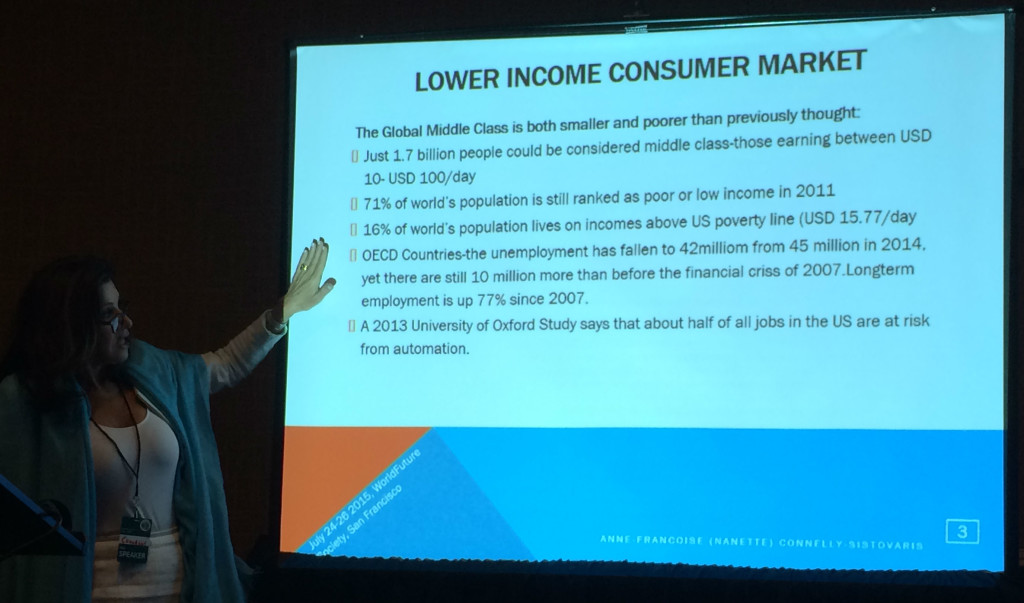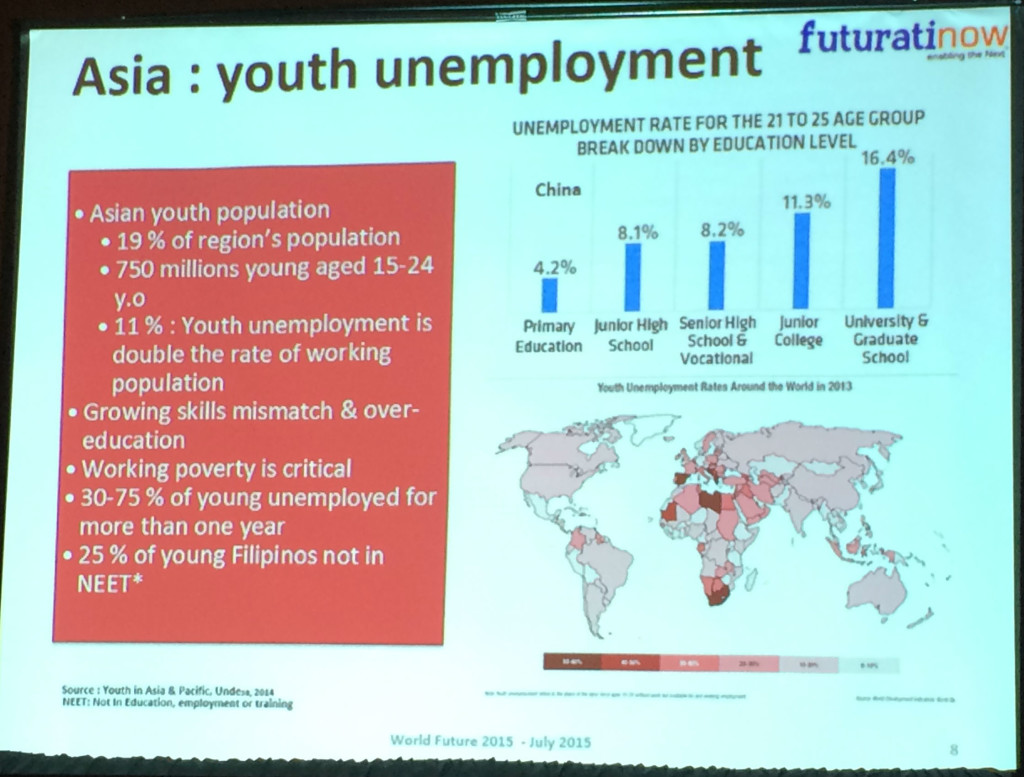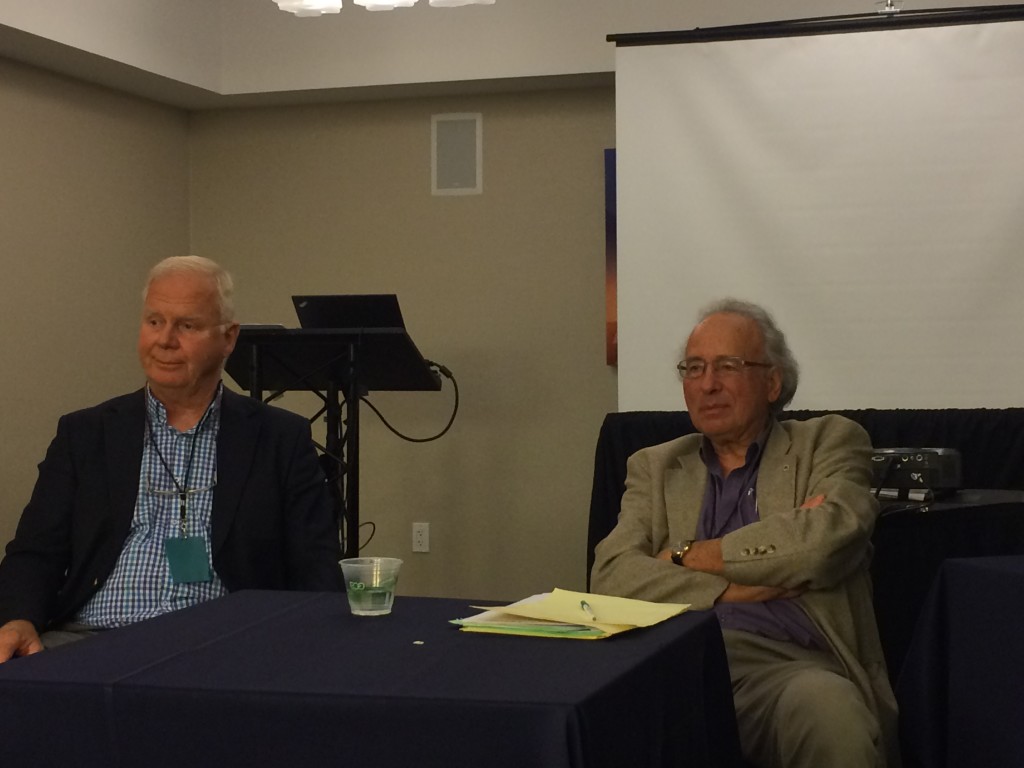World Future Society Conference Day Two – Hannah’s Reflections
by Hannah Steiner on Aug 25, 2020 • 10:42 am No CommentsThis post discusses the second day of the WFS conference, Sunday 26 July 2020. You can read about the sessions I attended on day one of the conference here and about the master classes we attended here. Sun will be publishing her blog post later this week.
The morning of the second day was spent preparing for our session ‘Building a talent-based economy in New Zealand’. There was a great turn out for the session and we received positive feedback. A film was made of our presentation and we will be publishing this shortly. The PowerPoint presentation from our session is shown below and you can check out more about our session on our TalentNZ projects page.
Teach the Future: Experiences from the Field
This session directly followed our presentation and consisted of five practitioners who ‘teach the future’ in secondary school, university, graduate and professional programmes and continuing executive education. Each presenter had only 10 minutes to present because of the limited time of the session.
Peter Bishop, executive director of Teach the Future and former director of strategic foresight at the University of Houston introduced this session. He talked about the need to teach children foresight and about his organisation, which was set up to do exactly that. The aim of this organisation is to encourage and support educators to introduce futures thinking into their classes and schools at all levels. Teach the Future’s by-line is ‘We teach the future as we do the past’.
Katie King followed Peter in presenting. Katie is a middle school (ages 11-15) English teacher and now also an independent consultant. Katie has been teaching foresight during English classes and has found it an incredible tool. It taught her students to be creative, have insights and ask questions. She encourages the use of storytelling to develop possible futures and to develop their thinking around alternative futures (the four Ps: possible, probable, plausible and preferable) when analysing problems in the classroom.
Sam Miller, Associate Professor at the University of Notre Dame, discussed his Foresight in Business and Society programme. By 2020 this programme had become a core requirement for all junior-level students at the University of Notre Dame. The course is designed to dissolve the line between academia and the ‘real world’, providing an introduction to foresight, as well as to mega-trends and current global challenges. This course helps to shape students’ analytical and research skills during and post-university.
Uri Avin is the director of the Planning & Design Centre for Smart Growth at the University of Maryland. The Centre is one of the only groups articulating and introducing scenario-based thinking into their professional education curriculum for urban planners. Uri shared how city planning has intuitively always been about visions for the future, yet thinking about the future is not effectively taught to planners. He argued that traditionally planners believe that they have a high understanding of the future and also a high level of control over the future. This is erroneous; planners must recognise the opposite. He argues that scenario-based learning is essential to becoming a successful urban planner. Scenario-based planning ensures that options are explored, alternative outcomes are developed and preferred futures are identified and worked towards. This takes us back to working through our four Ps (possible, probable, plausible and preferable futures).
Bob Harrison, programme manager at POST California Command College, was the last speaker. He came from a completely different profession – policing. Bob shared the successes of the College, California Commission’s flagship educational programme for police executives. The college’s 18-month graduate course includes a futures/foresight component (one of three core threads, the other two being executive development and Innovation and Creativity). Bob shared with us some of the emerging issues that students have identified including drones, driverless cars and bitcoin. Bob stated that understanding the development of these trends has helped move the policing profession forward, as it has been able to foresee changes in society and adapt to these effectively.
This session was a tasting-plate of ideas for the role of foresight in education and I am looking forward to doing some more research on these individuals and their respective programmes. I am particularly inspired by Peter Bishop and his organisation Teach the Future. We are lucky enough to have had Peter agree to write an essay for our upcoming TalentNZ Journal: Grow talent edition. I will be talking more about this in our TalentNZ newsletter, so if you haven’t already, please connect with TalentNZ.
Global Corporation: New emerging challenges
The four speakers in this session discussed the changing nature of multinational corporations markets. They stated that during previous decades multinational corporations have principally based their growth on the rising middle classes in developed countries. The inequality amongst global markets has caused the emergence of a rapidly growing middle class, which poses a dramatic mix of threats and opportunities for prominent western industries.
Robert Salmon, the former vice chairman of L’Oreal, began the session by discussing the challenge of continued growth for traditional multinational corporations that originated in developed countries. The complexity of this challenge has given rise to a need for innovative approaches to overcome it. Multinational corporations must now ask, can the traditional markets that have led us to success maintain their popular position? Robert does not think so. He argued that the rise in consumer power in developing nations (such as China, India and countries throughout Africa) is outgrowing that of developed countries. This can in part be contributed to population growth. These emerging countries are very important for configuring multinational corporations’ strategies for growth. The following are new trends that will govern consumer markets:
- We are moving into a world of extremes, where rapid economic growth and enormous wealth in some areas will cause with a rising level of inequality, leading to the emergence of both luxury and low-cost markets of unprecedented size.
- At the top of the wealth pyramid, the demographics and the aspirations are changing fast, shifting the focus of luxury from goods to experience, which is a key challenge for premium brands.
- At the bottom of the pyramid, the low-cost market is being reinvented by China and India, challenging key western industries, such as the automotive industry.
Nanette Connelly-Sistovaris, president of AFC Advisory Services SA (based in Switzerland) and the former General Manager of Citibank in Latin America. Nanette discussed how multinational corporations will need to meet the nutritional, medical and infrastructural needs of the increasing lower-income global middle class whilst maintaining corporate profit. To overcome these challenges, Nannette believes that multinationals must adopt ‘radical innovation’. This is about offering affordable solutions whilst tapping into the industrial world’s trend towards organic and nonchemical products. She states that the earth provides all we need for food, health and infrastructure. Furthermore, there is a wealth of ancient knowledge about herbal remedies for ailments and hygiene. Yet multinationals have not concentrated enough on tapping these natural resources, exploring ancient remedies and focusing their budgets to make leaps in productivity. She stresses that this can and must be achieved in a way that protects the environment.
Mylena Pierremont is the president of Ming Pai Consulting BV in the Netherlands. Mylena discussed how global corporations are becoming increasingly purpose-driven and outlined the new consumer realities for those corporations. The consumer market is changing at an exponential pace to which corporations must adapt. Corporations need to ask themselves what kind of organisation they want to be in the future.
There is a blurring ecosystem formed around the consumer as part of the company. Consumers are asking corporations to have a purpose and to form an emotional connection with them. Corporations that have embarked on the mission of developing a purpose that emotionally connects with the consumer are doing better and outperforming those corporations that have not. Mylena provided the example of the paint company AkzoNobel. AkzoNobel’s purpose is not to sell paint, it is to ‘add colour to people’s lives’. AkzoNobel is selling optimism and it has changed the way consumers perceive the company.
Christopher Cordey is the CEO of futuratinow.com as well as a foresight advisor based in Geneva. He discussed the challenges facing the Asia-Pacific region. He argued that economic success in Asia has obscured the critical issues and challenges affecting the region, or part of the region. Two areas Christopher believes to be critical for multinational corporations to think about in this region are youth unemployment and the rising demands of the middle class.
The Asia-Pacific region has a high percentage of youth unemployment and one of the major challenges for youth is within the education system, where growing skill mismatches are seen between what is taught and what is needed for employment. Christopher stated that in 2030 it is estimated that the Asia-Pacific region will represent 64% of the world’s middle-class population, and about 60% of middle-class consumption. This means that multinationals need to look to the Asia-Pacific as a big market.
Given these growing trends in the Asia-Pacific region multinationals will face the following challenges:
- How to keep their own licence to operate, as well as addressing the daunting challenges of poverty alleviation, income disparities, gender discrimination, widespread corruption and environmental threats.
- How to enable the growing young unemployed Asian population to enter the labour market.
- How to meet the needs of a larger poorer, cognitively enhanced and demanding middle class with tastes and preferences living in countries at different stages of their economic and social development.
This session was a very practical one and I was impressed by the emphasis on alleviating inequality and changing the nature of business to meet the needs of consumers. The thread that ran through all four presentations was the need for multinational corporations to ask ‘If we want to sustain our business in the long term, what conditions do we need to adjust now?’ Further, it appears that corporations need to actively pursue the idea that helping millions of people out of poverty makes sense. It helps consumers identify and relate to the organisation, but also creates a new market for their products. Lastly, as Christopher said there needs to be a bridge between the technologically and cognitively advanced and the rest of the world.
WFS 2.0 Bridging the Techie, Greenie and Grumpie Gaps
Michael Marien, director of GlobalForesightBooks.org and David Harries, associate director at Foresight Canada discussed the conflict that arises between ‘techies’, ‘greenies’ and the ‘grumpies’. Upbeat ‘techies’ pursue innovation and potential profits, and pay scant attention to sustainability issues. Concerned ‘greenies’ seek sustainable development and environmental protection to benefit humanity, but ignore the many tech revolutions that are unfolding. Critical ‘grumpies’ worry about growing insecurity – threats from weapons technologies and InfoTech vulnerabilities, and, increasingly, from global warming – while also being concerned about growing inequality and job loss due to robotics, as well as issues posing existential risks such as A.I. and Arctic methane. Michael and David were both self-confessed ‘grumpies’. One of their projects together is The Security and Sustainability Guide, a paper that identifies more than 1,100 organisations that focus on security and/or sustainability. They state that this is the first of its kind and brings together important information in an easily accessible format.
At the beginning of the session Michael and David stressed that they were providing a healthy critique of futurists, and that is exactly what they did. They were analysing the future by critiquing the futurists who study the future. They made a point that they felt the WFS was becoming a ‘World Future of Technology Society’, which is relatively true; a major theme of the conference was future technological advancement. Most speakers talked about how technology was going to revolutionise all aspects of life, without giving much thought (or perhaps just not mentioning) the environmental and social implications of these revolutions.
Being held in San Francisco, so close to Silicon Valley, I guess it is understandable that there was a focus on technology and a major contribution from the ‘techies’. In saying this, however, San Francisco also has one of the highest numbers of environmental and sustainability organisations (the ‘greenies’) in the United States. Michael made a point that as participants were required to pay to speak and attend the conference, this perhaps ruled out many speakers from ‘greenie’ NGOs who were unable to pay the costs of attendance.
I really enjoyed how this session contrasted to the rest of the conference. They were arguing for a re-conceptualisation of the World Future Society’s operation and goals. They challenged the perception of the WFS’s alternative future and critiqued the single-vision perception that technology is going to ‘be the answer for the future’. They agreed that technology is going to be a major part of the future, and that this is not a bad thing. They argued, that technology is not going to be the only ‘possible’ alternative future; it is most likely, however, our ‘probable future’.
Michael argued that allowing technology to dominate a discipline that identifies possible futures is not using the very tools designed and promoted by the discipline. I thought back to my second day master class, which taught me to think about the micro-trends that we should be keeping an eye on when we are thinking about the future. Is the dichotomy between ‘techies’ and ‘greenies’ a micro-trend that many futurists, or even the WFS itself, are overlooking?

























![20160906 McGuinness Institute - TacklingPovertyNZ Workshop – Far North Flyer [FINAL]](/wp-content/uploads/20160906-McGuinness-Institute-TacklingPovertyNZ-Workshop-%E2%80%93-Far-North-Flyer-FINAL-1-50x50.png)